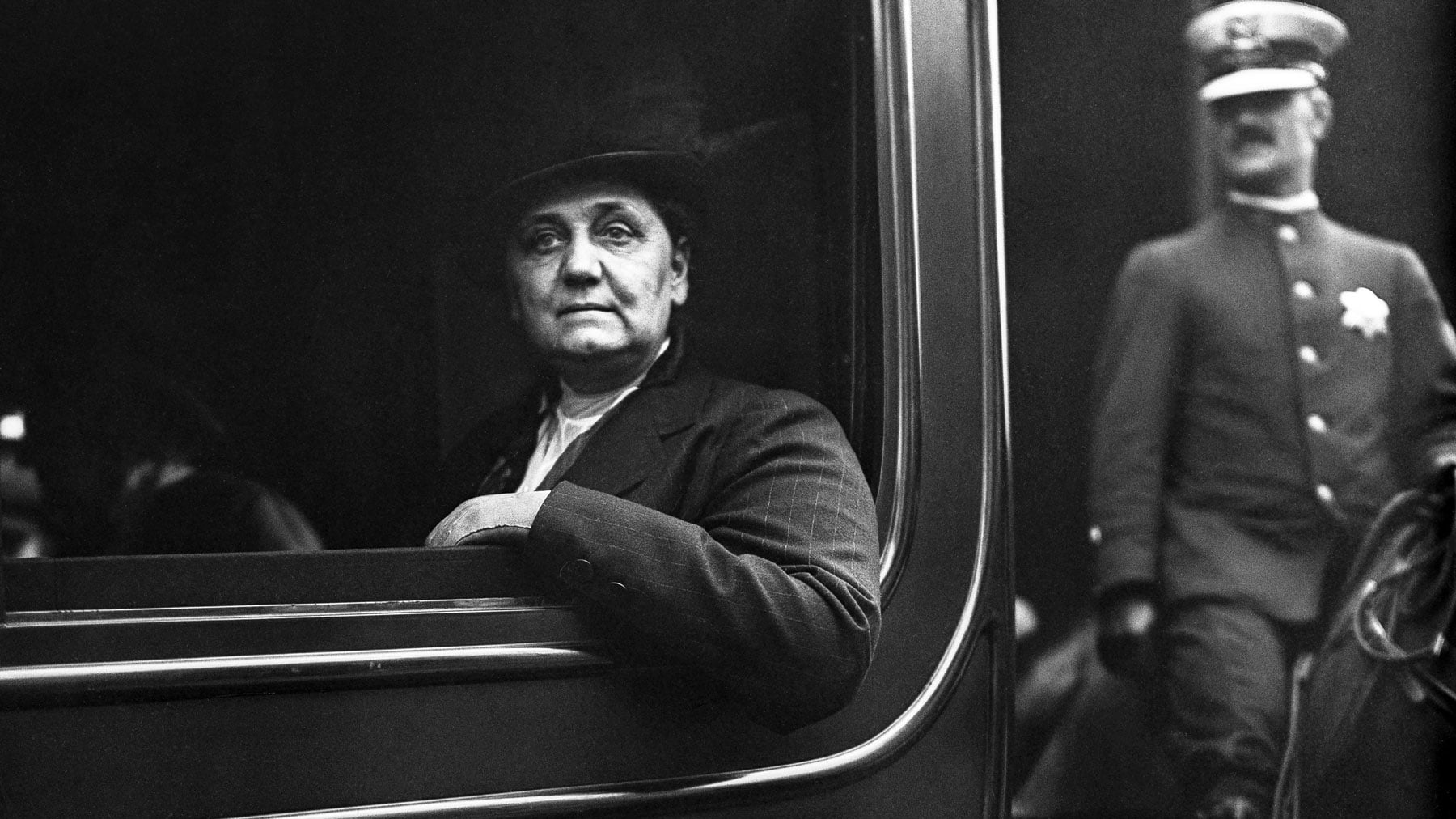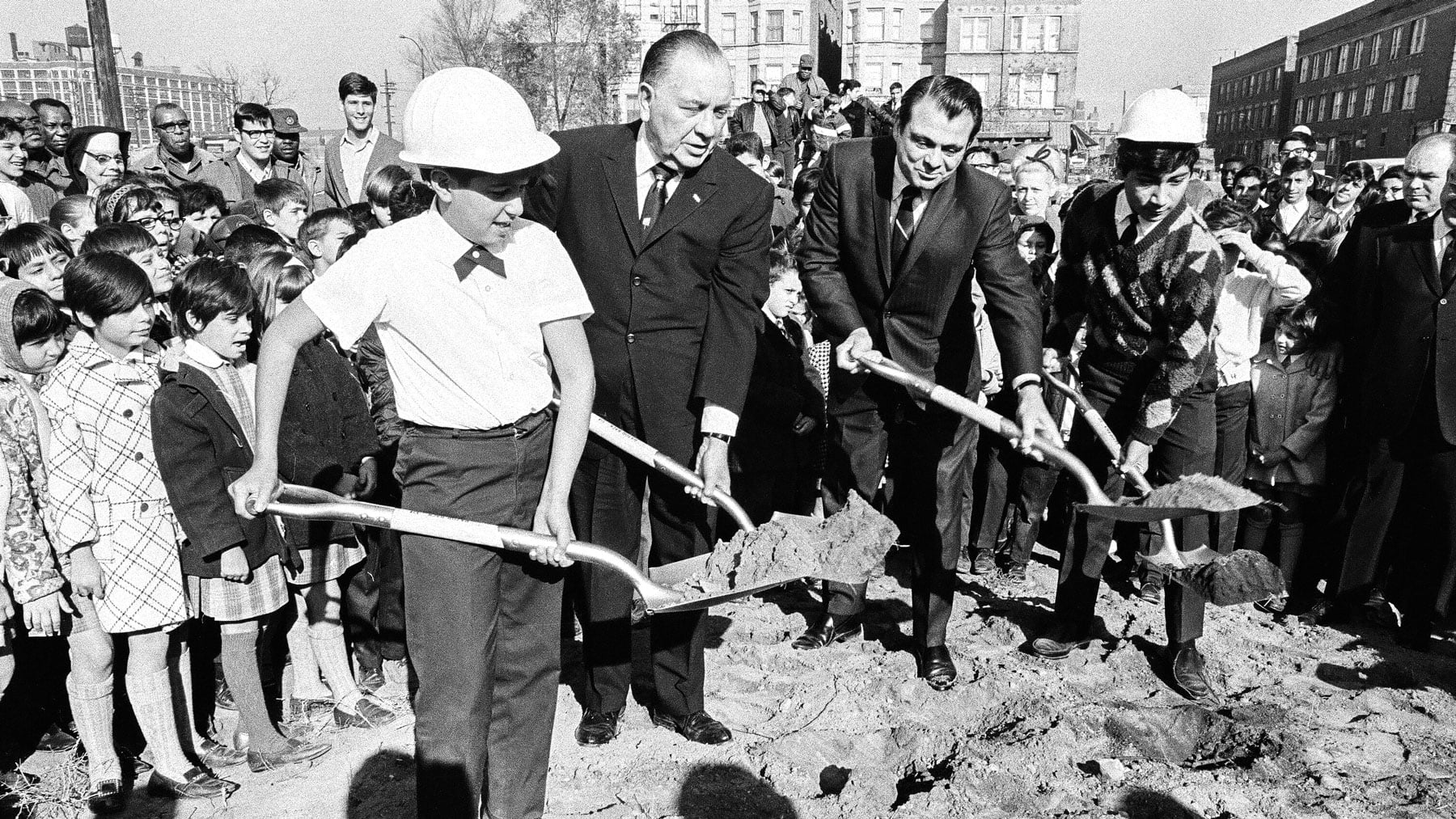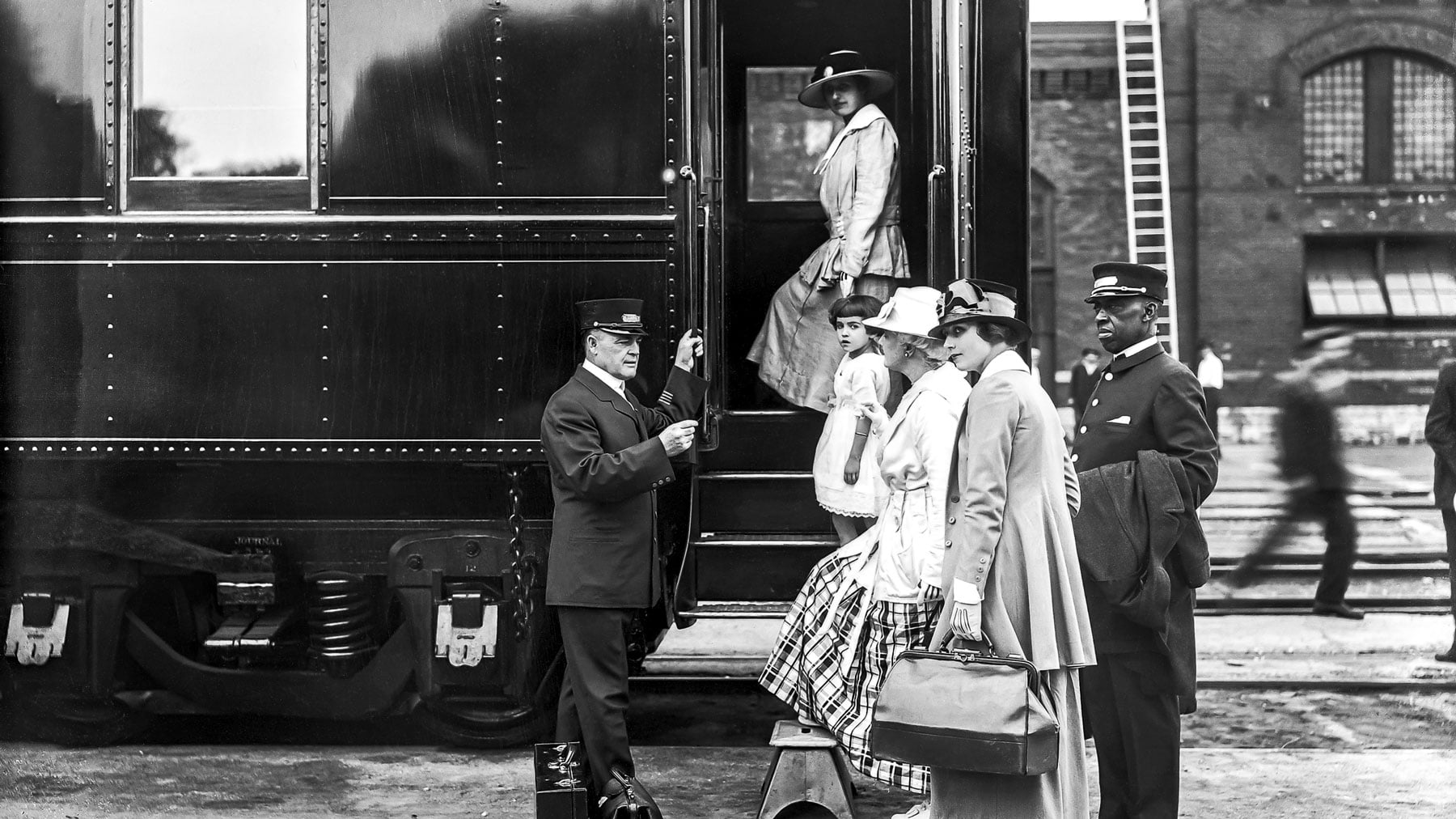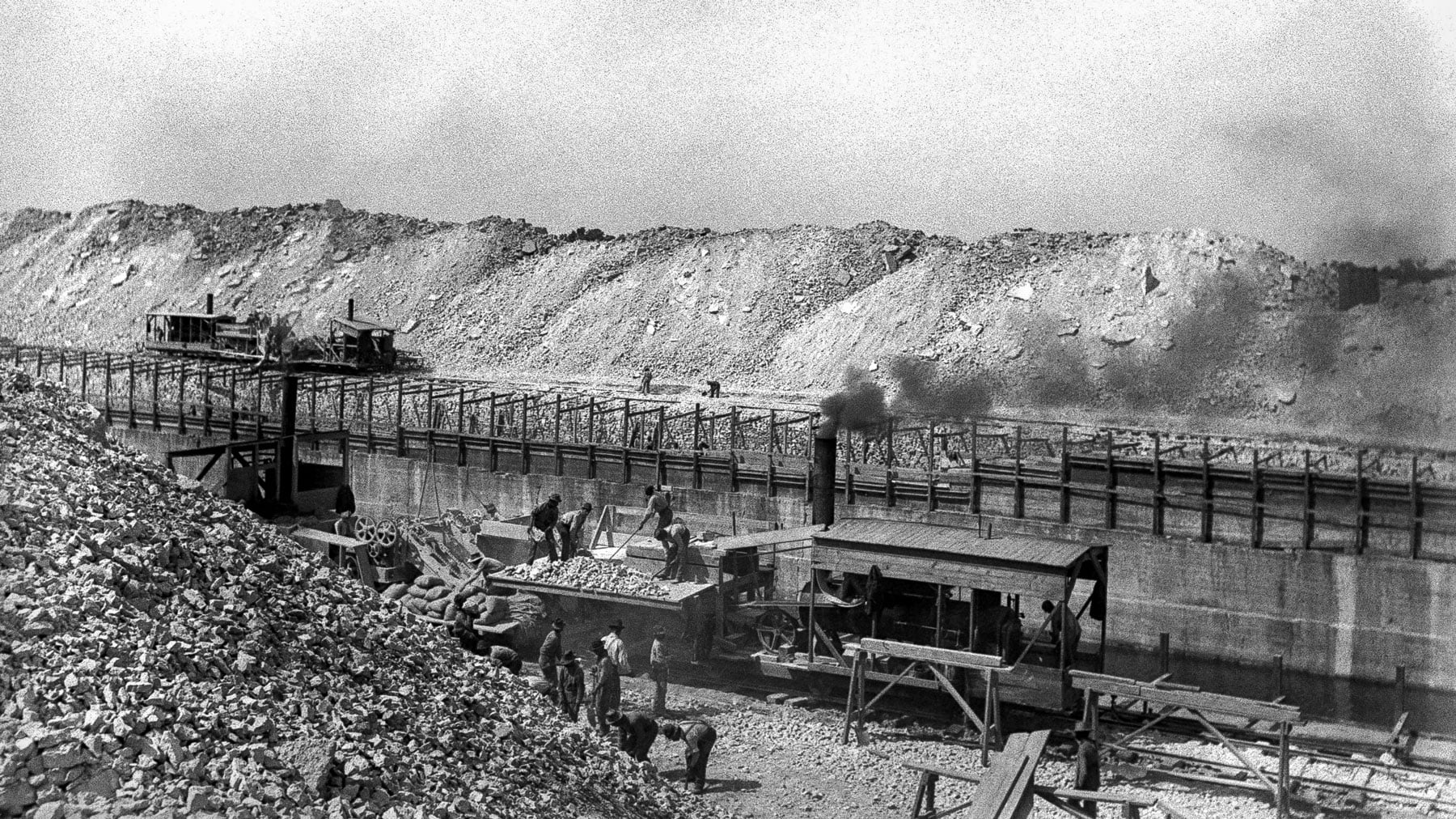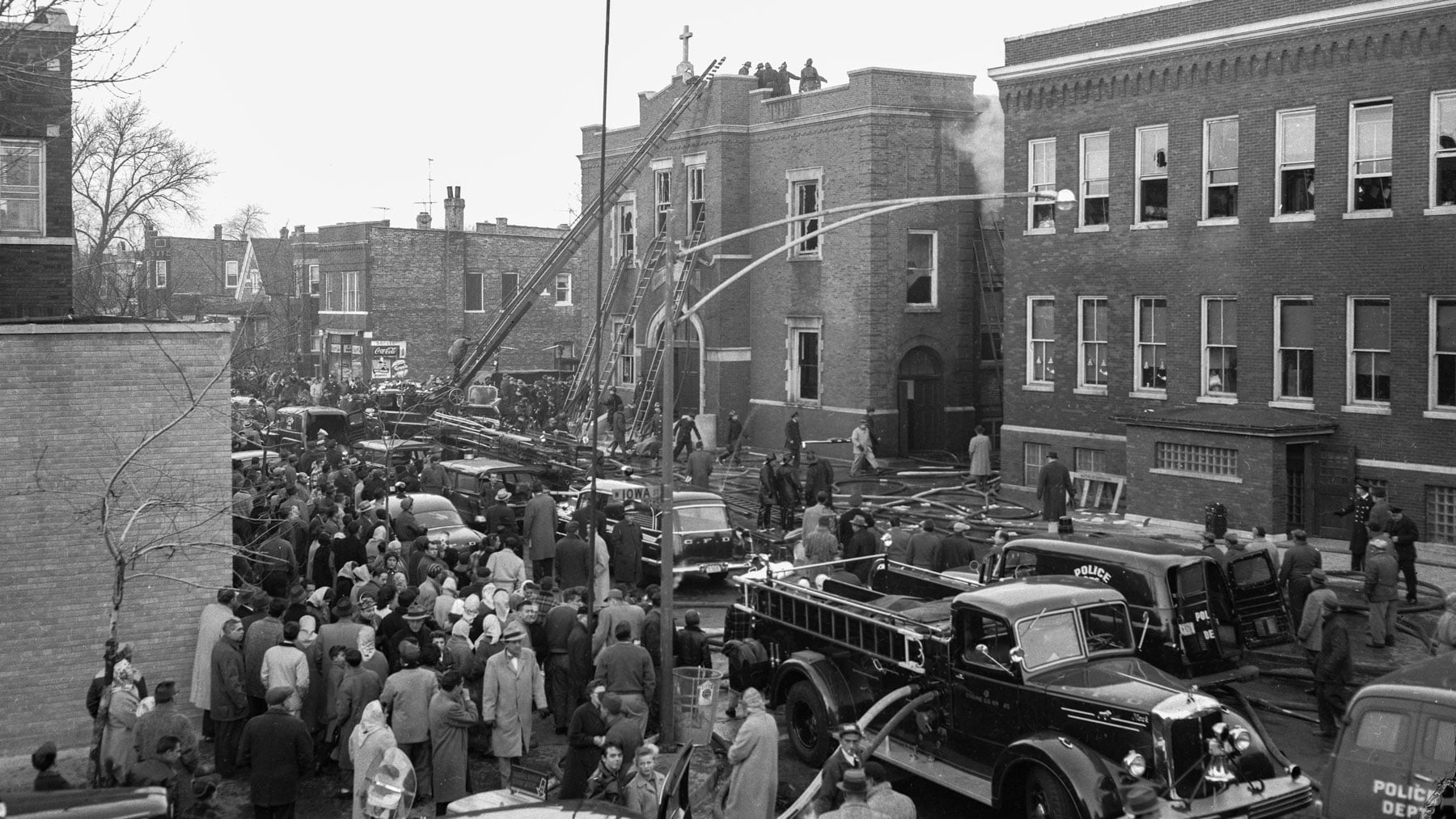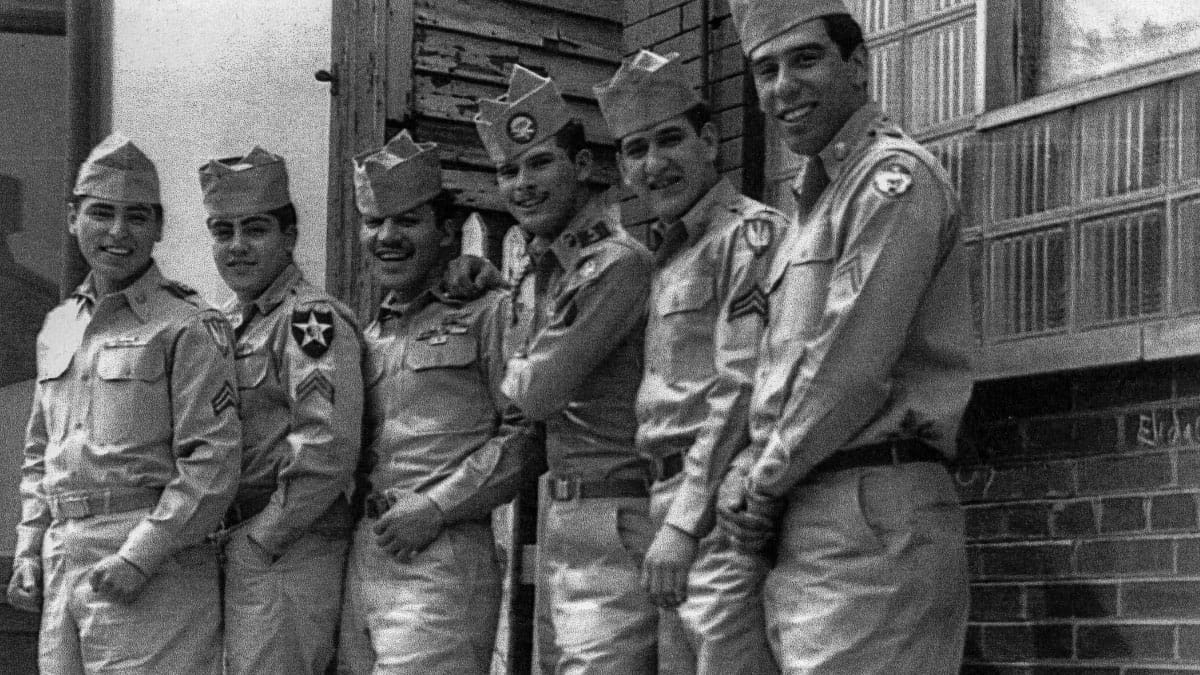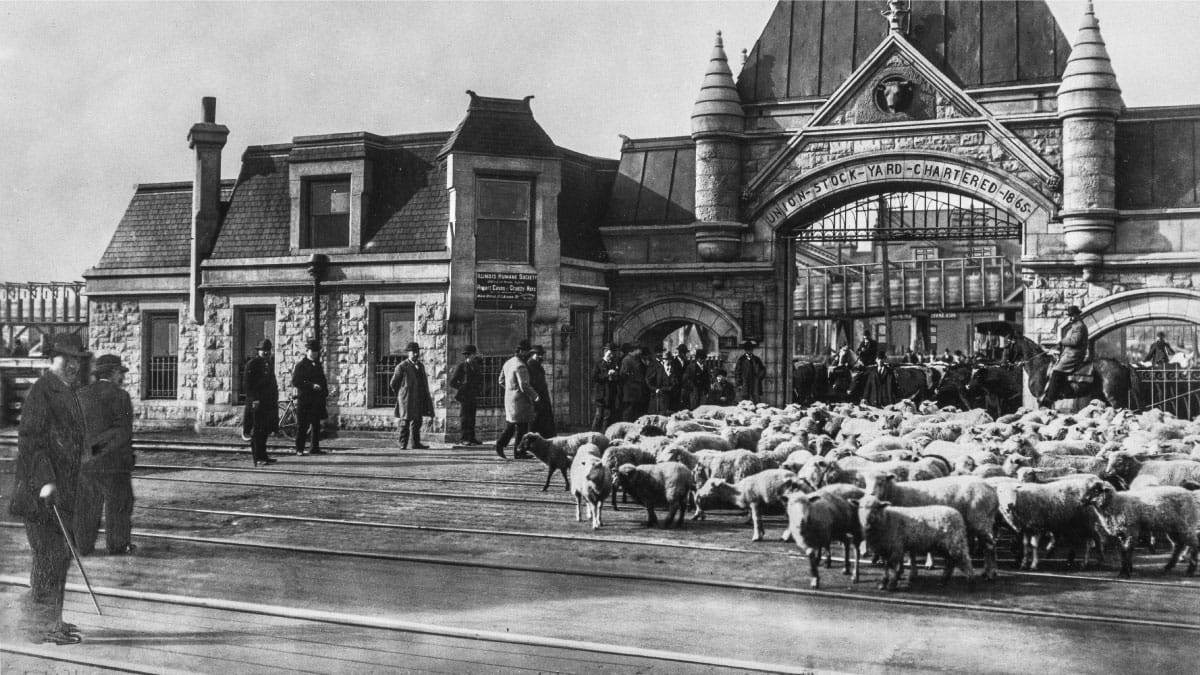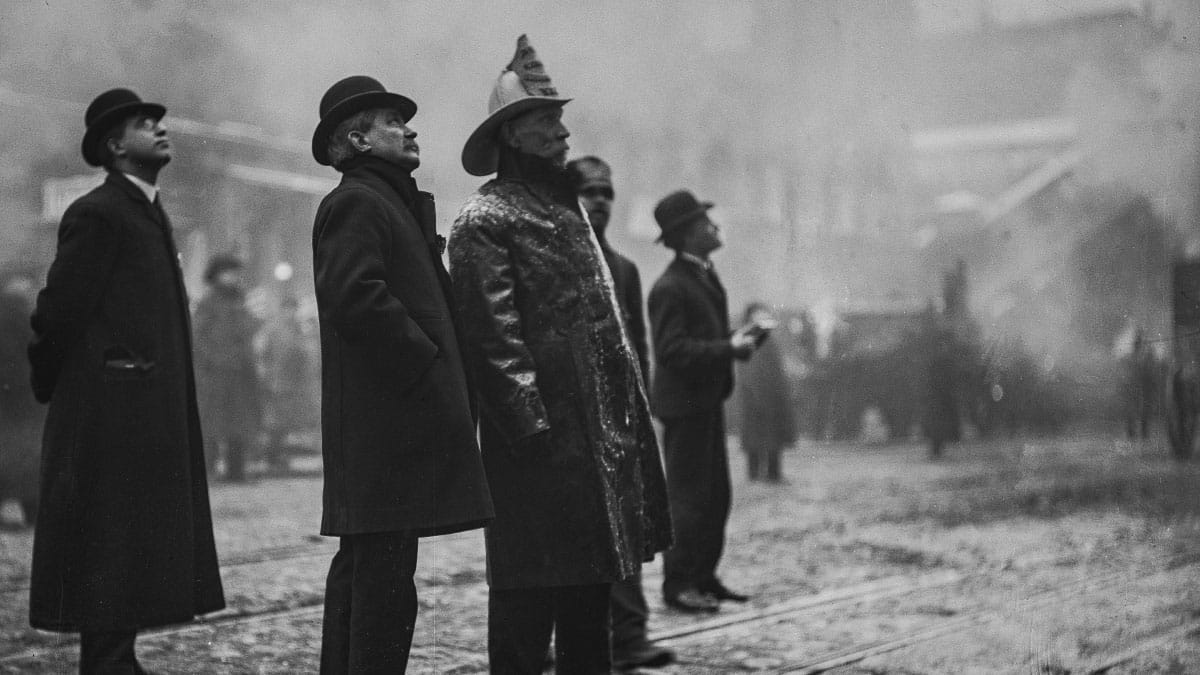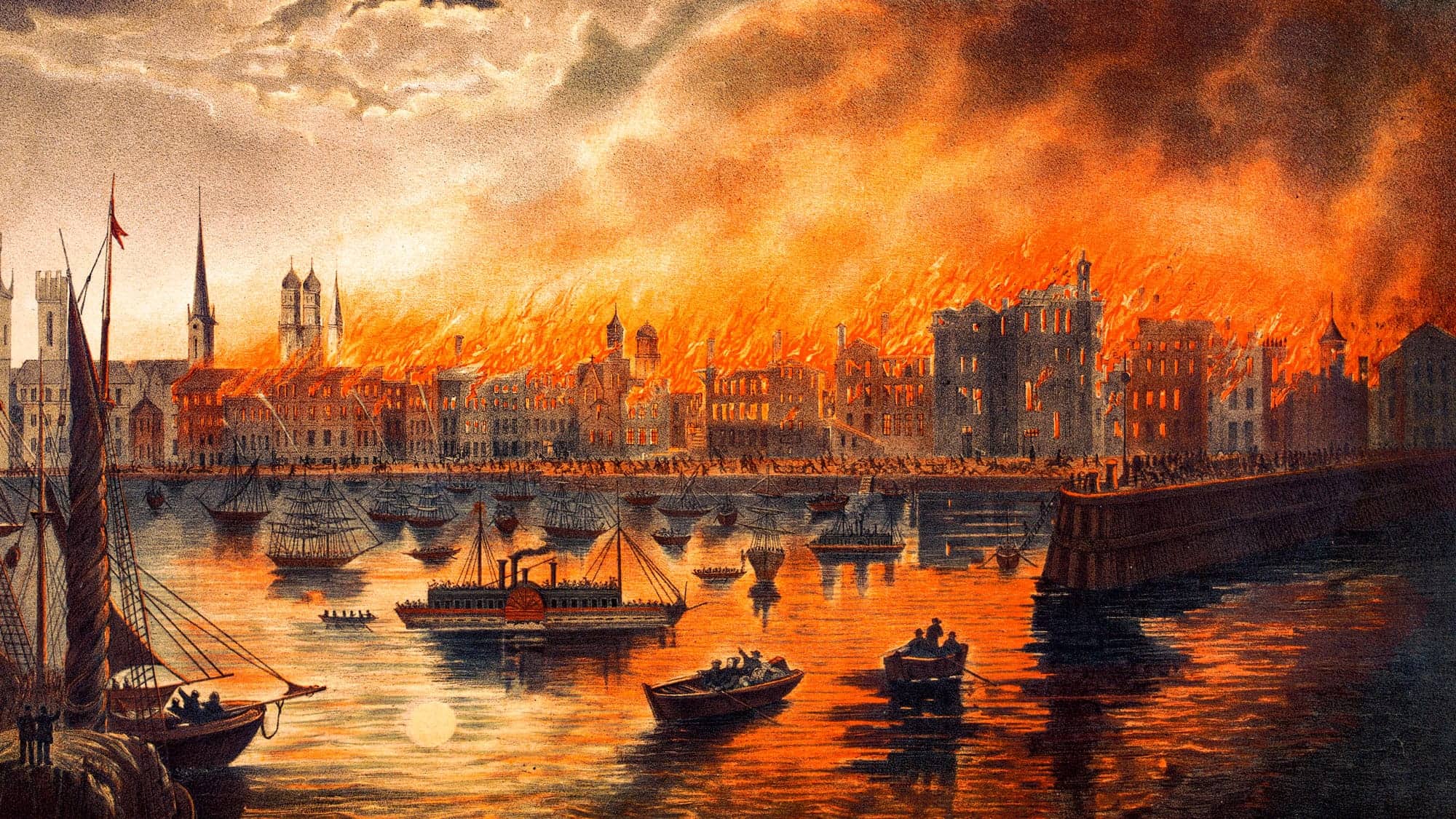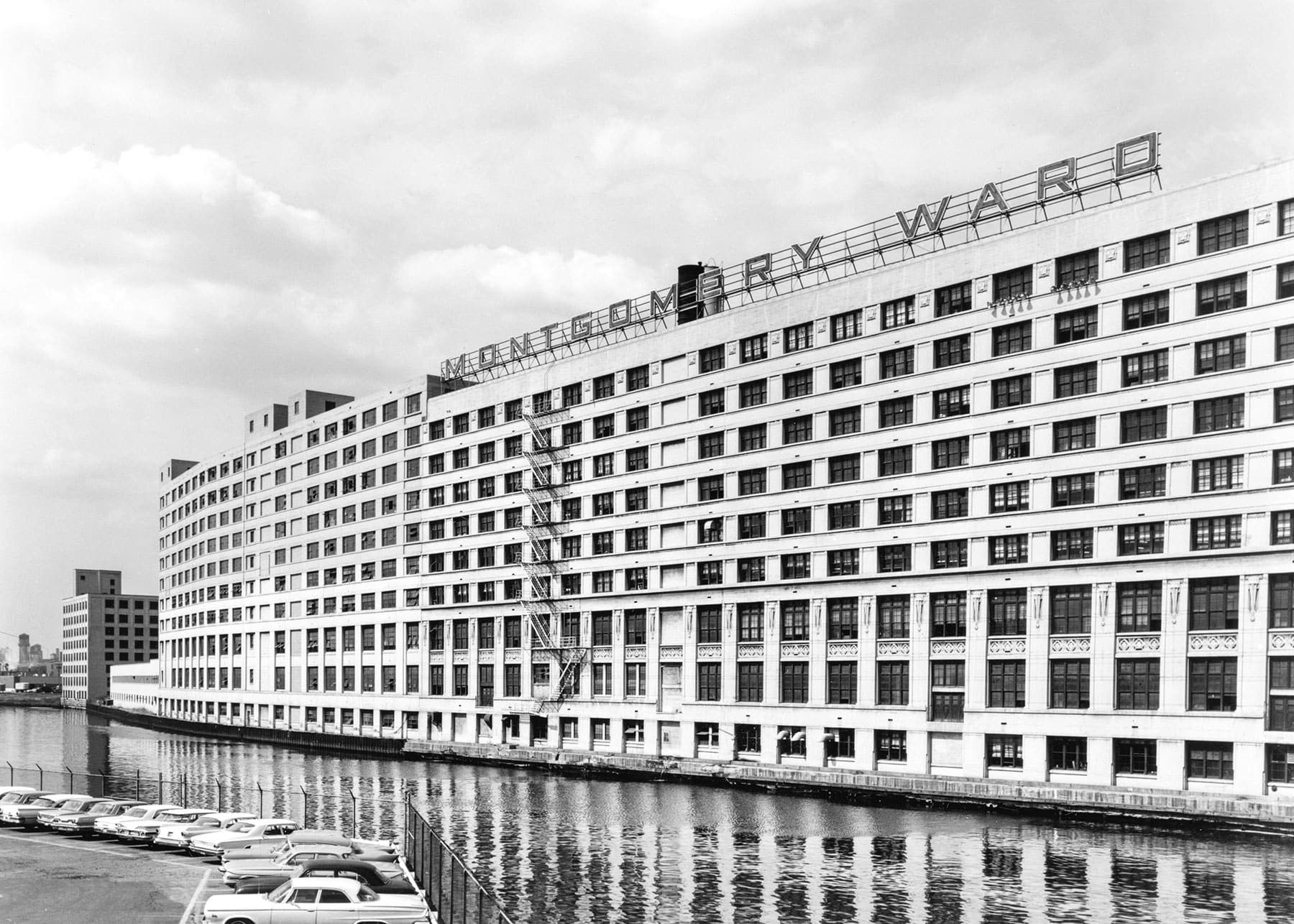The end of the twentieth century would see the decline of two mail order giants: Montgomery Ward and Sears. Though other retail and e-commerce giants have long since taken their place as consumers’ favorites, the two companies left an indelible mark on Chicago and its landscape. In fact, each company had at one time a building that was the tallest in the city. Some of the structures that housed these titans still remain, while others have drastically changed or have undergone a significant name change. Explore the history of six Chicago locations connected to Montgomery Ward and Sears below.
The Original Montgomery Ward Warehouse at Clark and Kinzie Streets
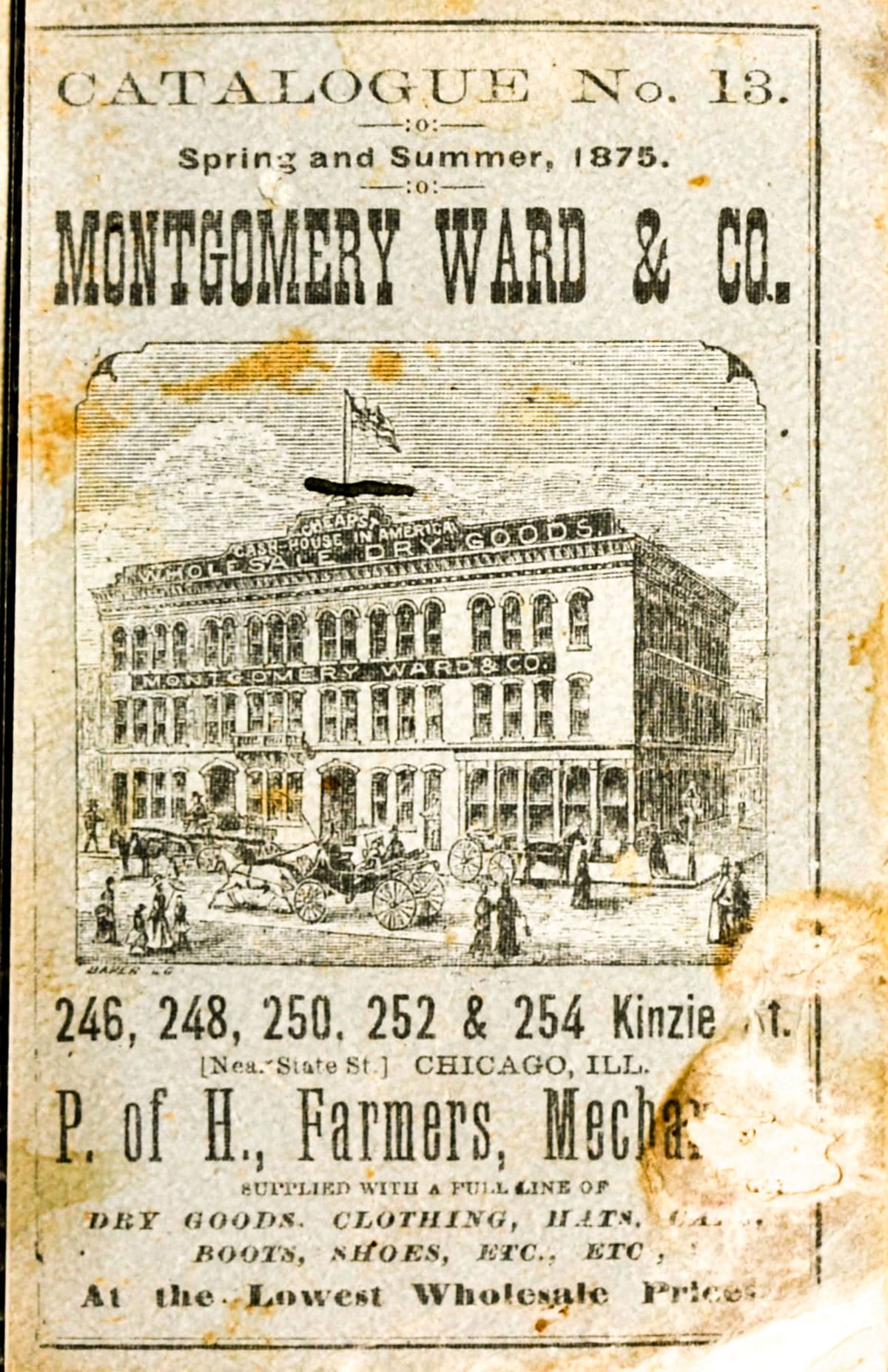
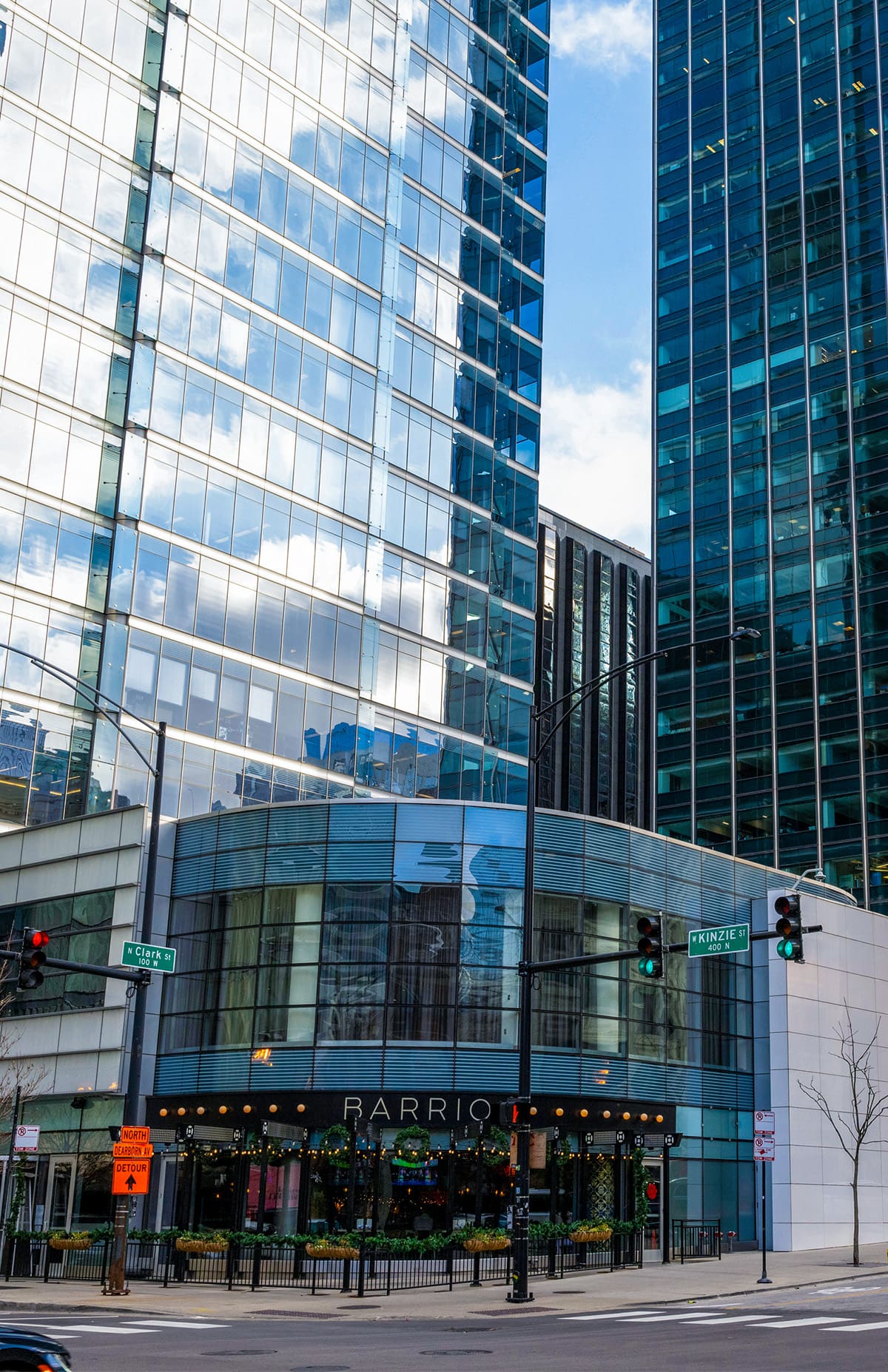
Montgomery Ward, one of the nation’s earliest mail order companies, got off to a rocky start. Not long after a traveling salesman named Aaron Montgomery Ward began stockpiling inventory for his new mail order business, the Great Chicago Fire of 1871 incinerated much of the city, taking Ward’s inventory with it. Ward’s company regrouped, operating out of their first warehouse near the intersection of Clark and Kinzie streets. What started in 1872 as a one-page catalog selling items to farmers in rural areas became a large mail order, and later retail, operation. The warehouse is long gone, with modern glass office buildings in its place today.
Montgomery Ward Tower, Michigan Avenue
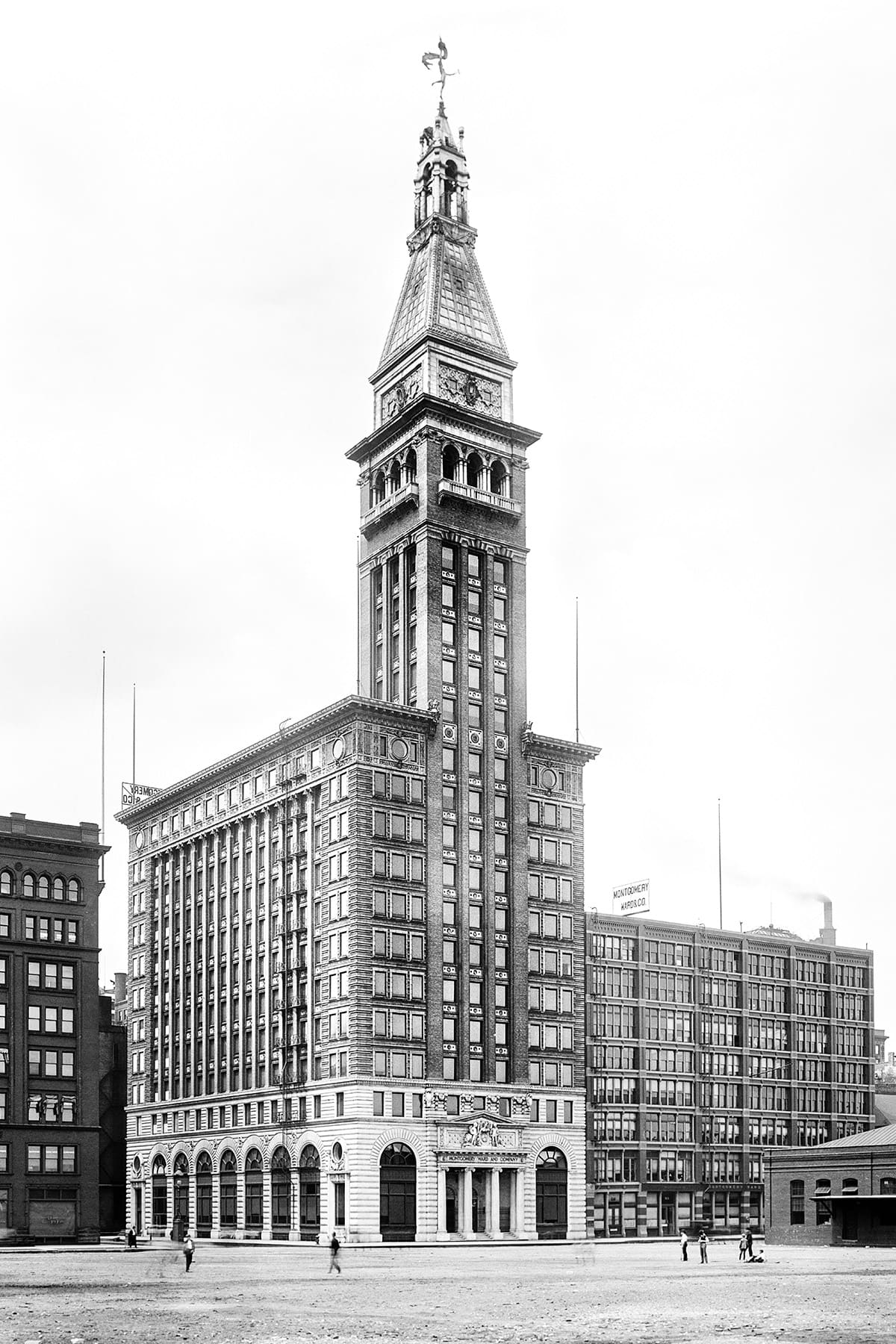
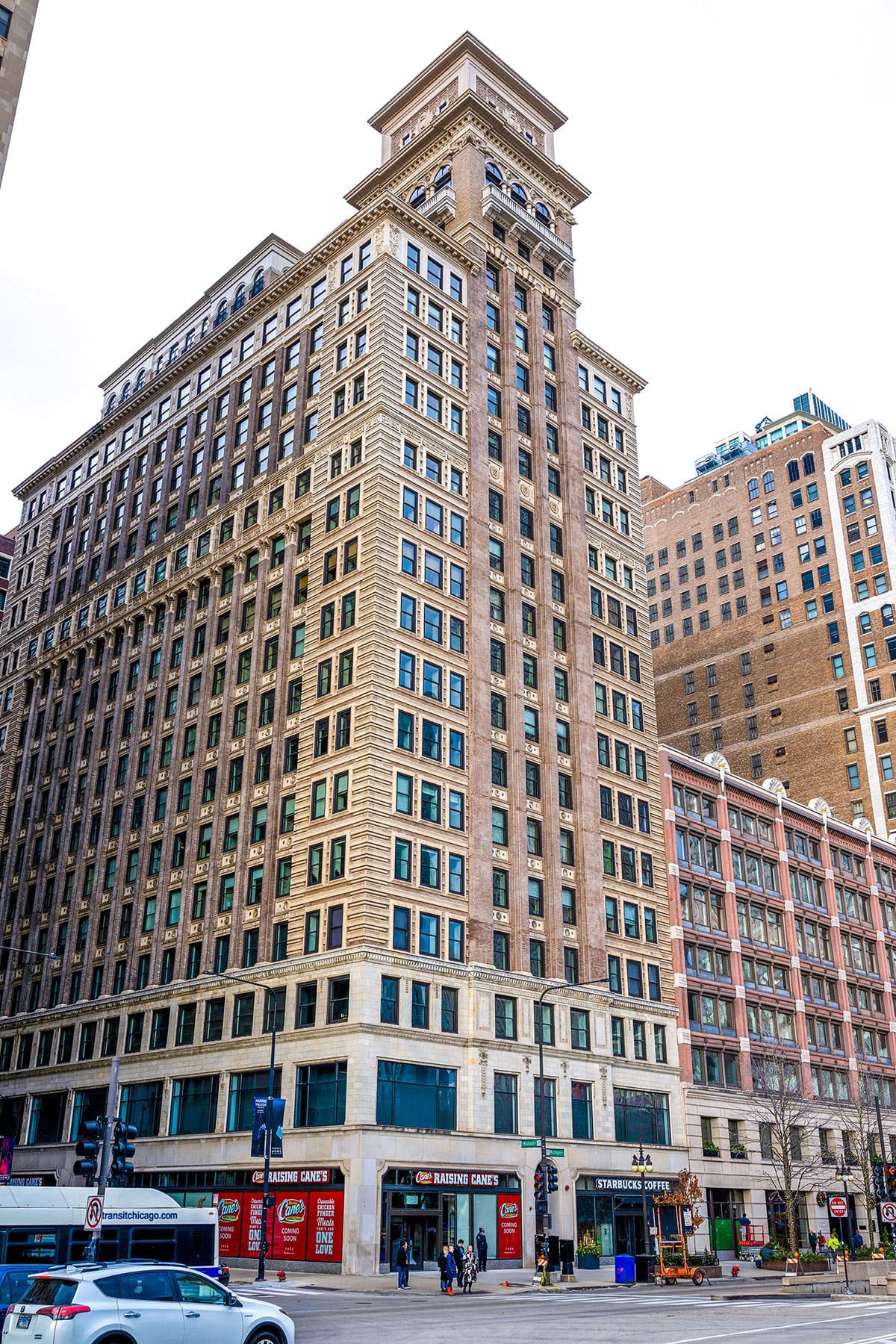
In 1898, Montgomery Ward built a tower next to its warehouse on Michigan Avenue as its new headquarters. At 394 feet and 22 stories, it was the tallest building in the city at the time, and it would retain that title until the Wrigley Building was completed in 1922. The building itself was likened to a “busy beehive.” Those visiting the building could go up to the observation tower to get a view of Chicago. Atop the tower was a sculpture called Progress Lighting the Way for Commerce. It was similar to a gilded weathervane sculpture of the goddess Diana on top of the Agricultural Building at the 1893 World’s Columbian Exhibition. A third similar statue, called The Spirit of Progress, would find its home in Montgomery Ward’s next headquarters (more on that below). Today, the building at 6 North Michigan Avenue, now condominiums, looks quite different from the original structure. In the 1920s, additional floors were added. The pyramid portion of the tower (along with the sculpture) was removed in 1947, shortening the building to 282 feet.
Montgomery Ward Warehouse Complex, 618 West Chicago Avenue
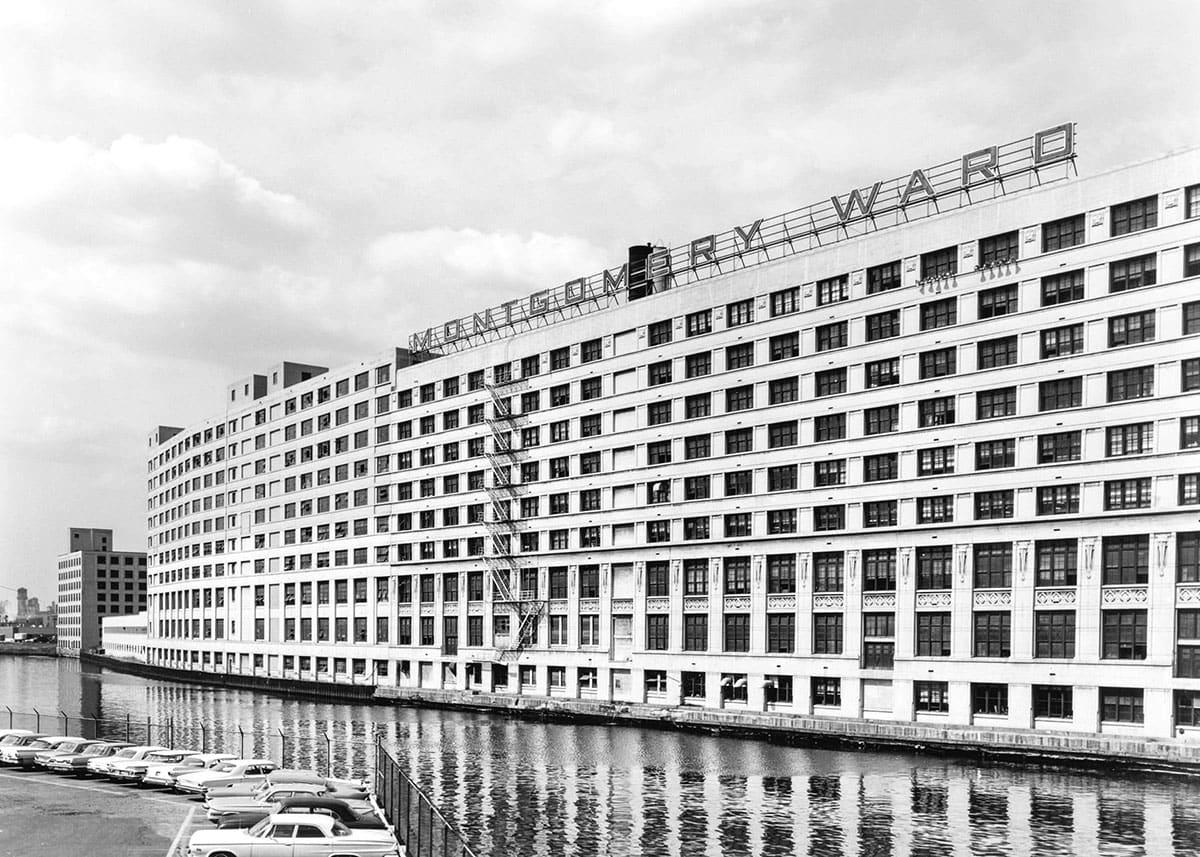
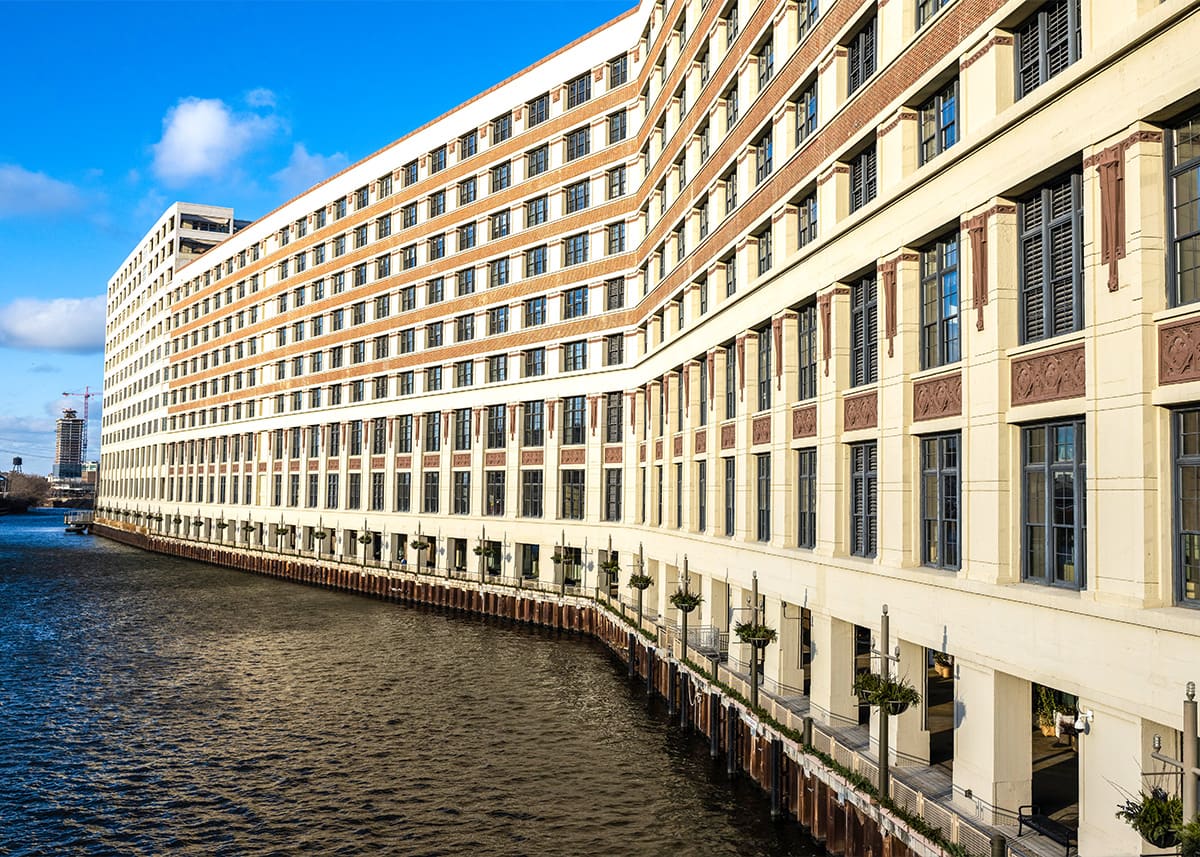
By the mid 1880s, Montgomery Ward had become a mail order giant. It was in fierce competition with Sears but otherwise a booming operation. To keep up with demand, it moved into a sprawling complex, complete with an administration building and a 1.25-million-square-foot, 8-story mail order warehouse, in 1908. (Additional warehouses were built in later decades.) The mail order house sits along the North Branch of the Chicago River and was so large that some employees traveled its halls on roller skates. The Spirit of Progress statue sits on top of the administration building, which is just south of the mail order house across Chicago Avenue. It is similar to the sculpture that was on top of the Montgomery Ward Tower on Michigan Avenue, and in turn, the Diana sculpture from the 1893 World’s Fair. Today, the administration building is home to condominiums, and the mail order house serves as an office building. The complex is a National Historic Landmark and is also on the National Register of Historic Places.
Original Sears Warehouse
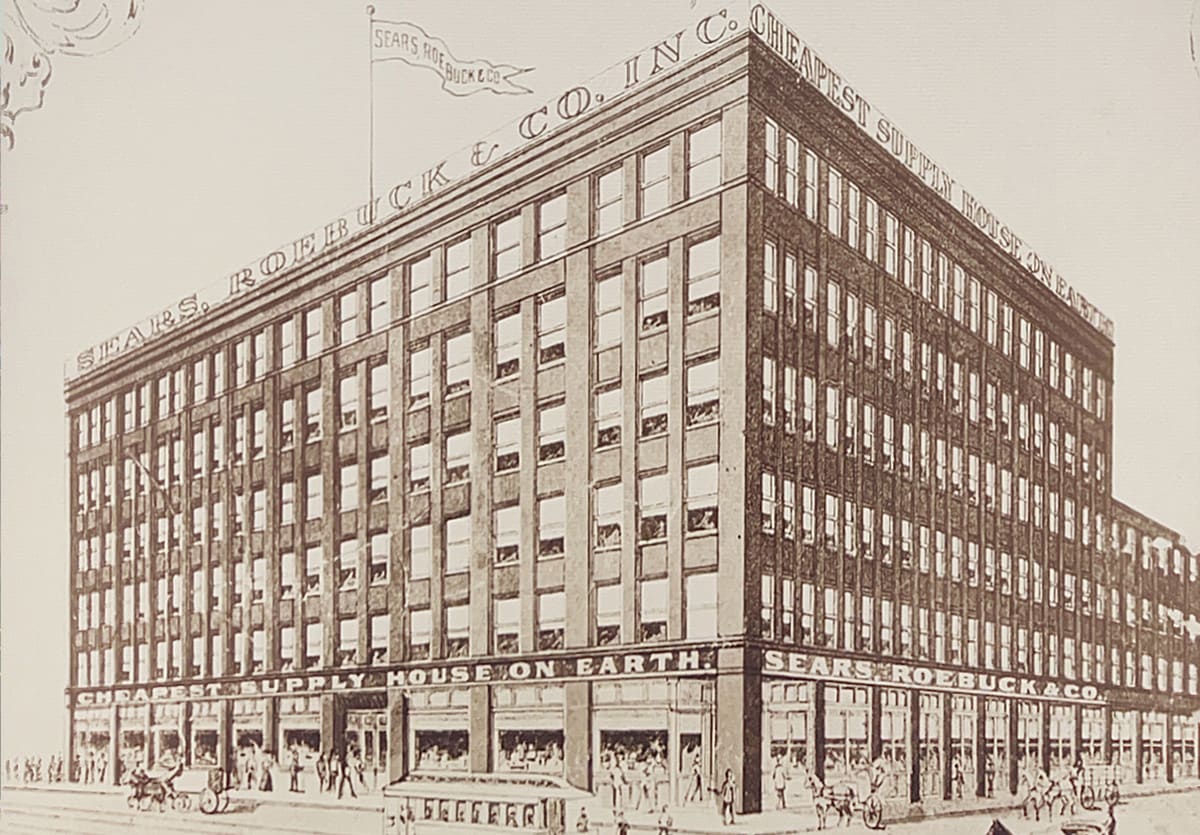

Though it was not Sears, Roebuck, and Company’s first building, the company’s first truly large warehouse space was called the Enterprise Building in the West Loop. The building, which they began using in 1896, spanned the entire block between Fulton, Jefferson, Wayman, and Desplaines streets. According to the company’s history, it was expanded several times until Sears moved to its Homan Square complex. Today, the building has been converted to condominiums.
Sears Homan Square Tower and Administration Building
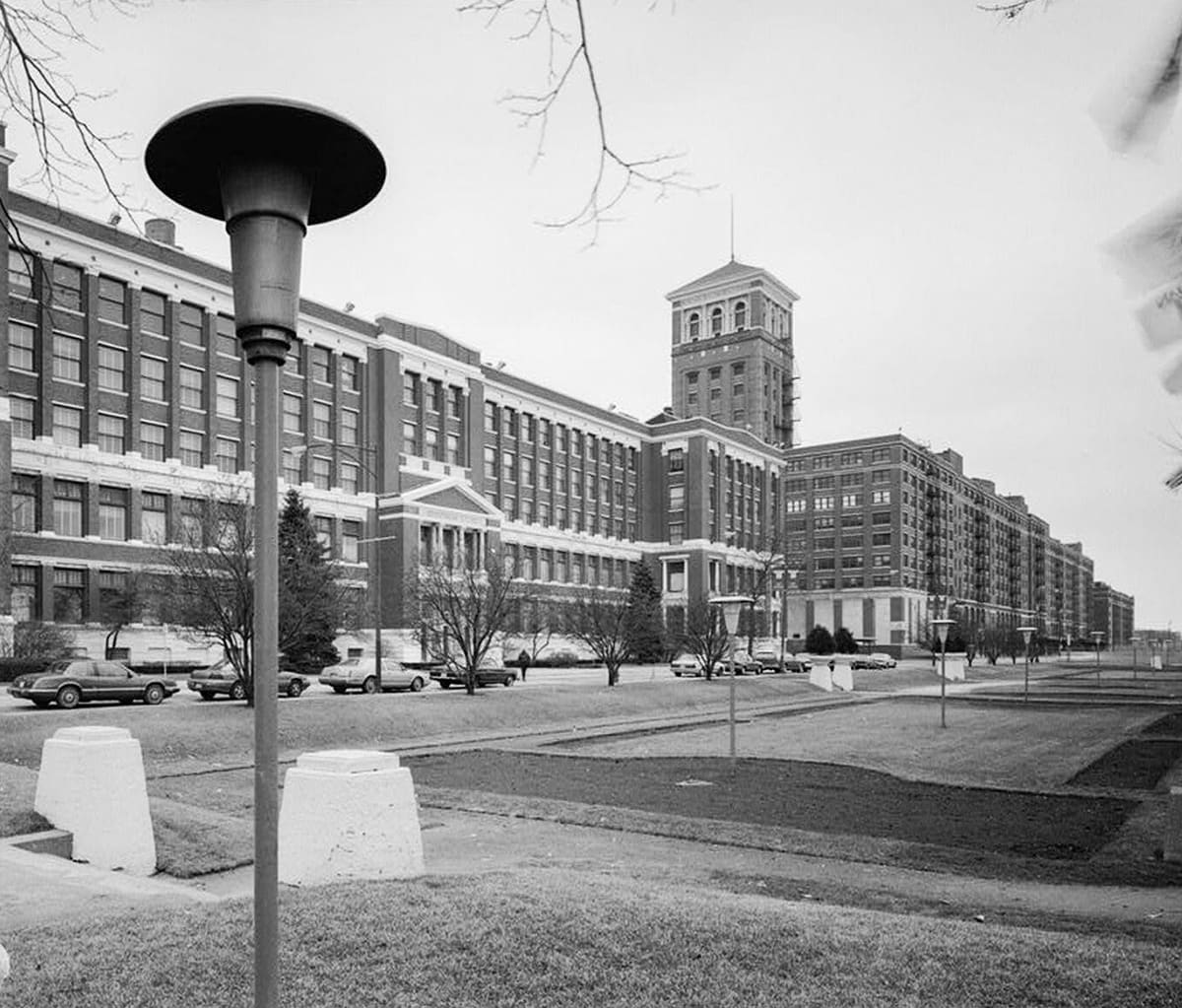
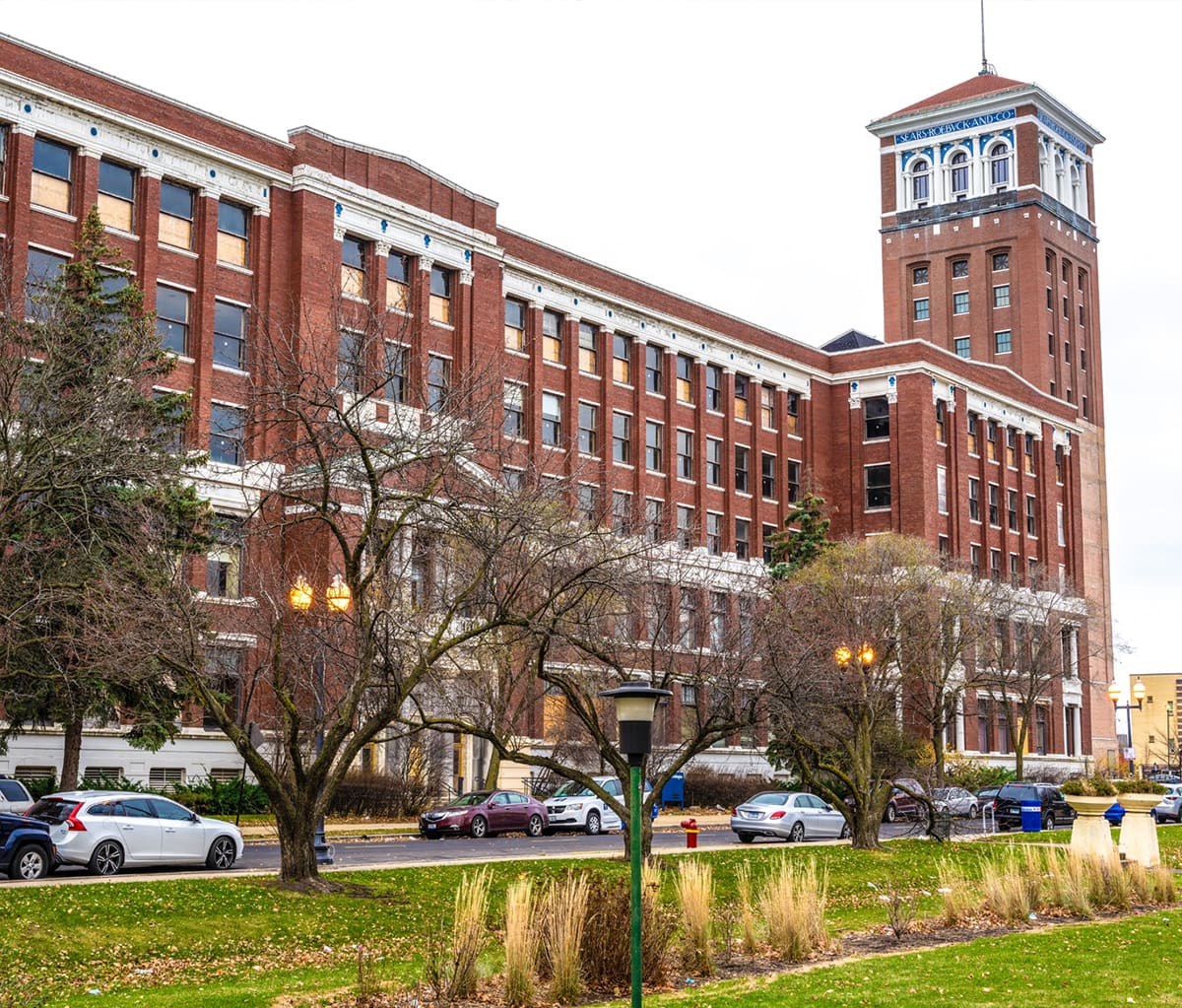
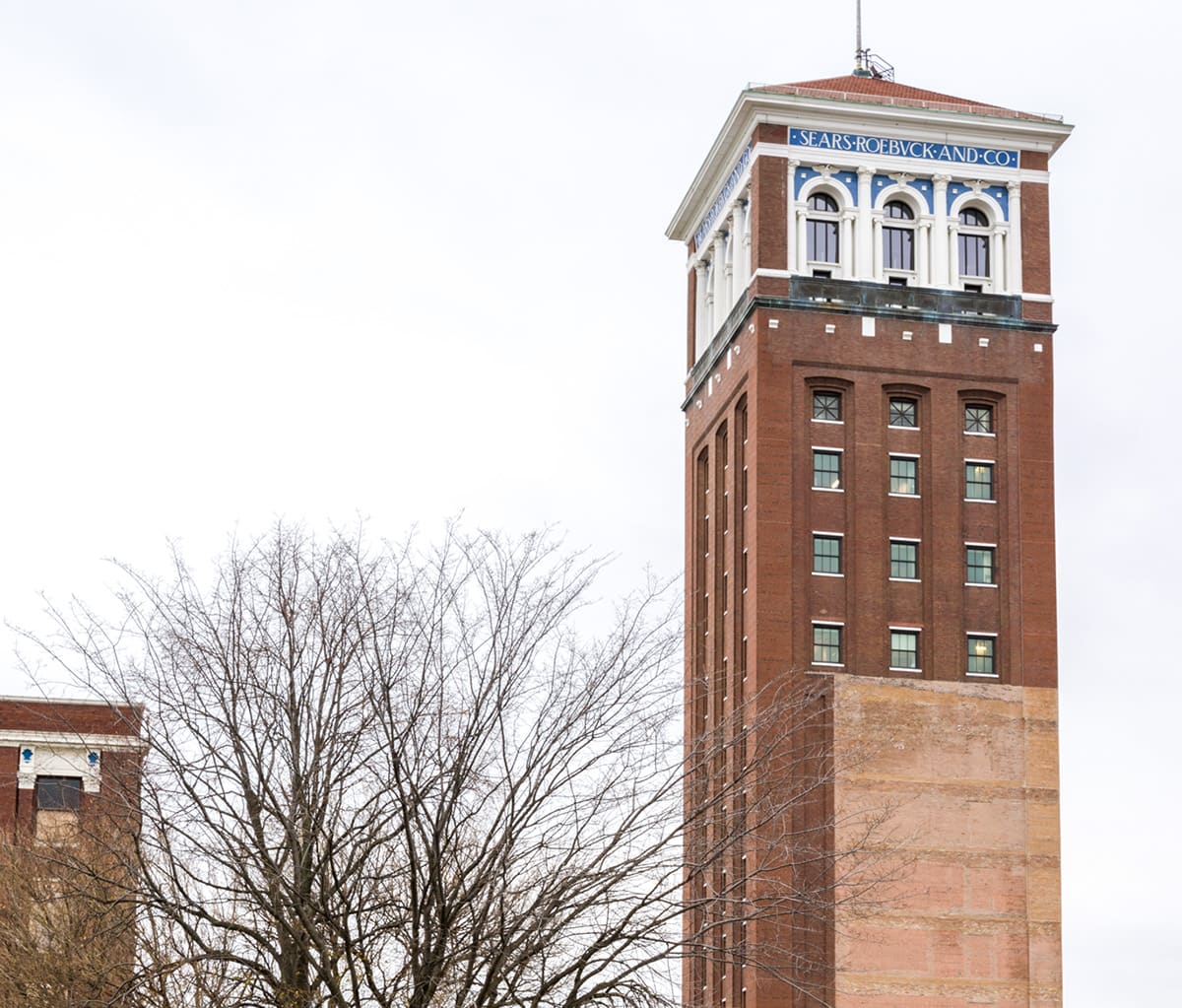
As Sears grew as a company and outpaced Montgomery Ward in sales, it moved into a large complex in Chicago’s Homan Square neighborhood. The 40-acre campus, designed by architecture firm Nimmons and Fellows, included a printing building for its catalog, a merchandise building, and an administration building. The campus included perks for its employees, including a YMCA, athletic fields, classes, and a health clinic. The administration building remains today. The merchandise building was demolished, but a stand-alone tower remains.
Willis Tower
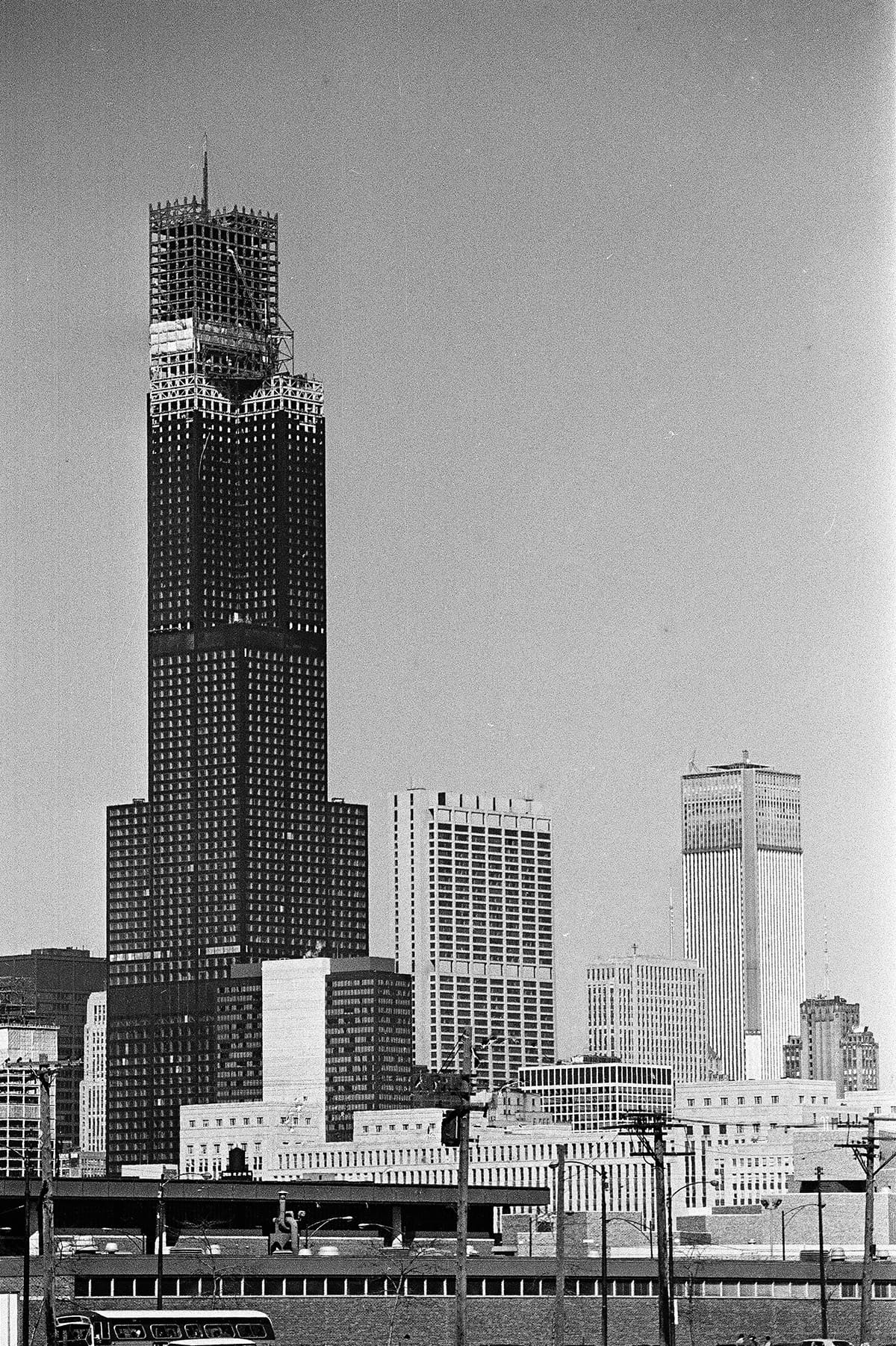

One big thing has changed since Willis Tower opened in 1973: its name. Formerly known as Sears Tower (and perhaps still known as that by many Chicagoans), the building took roughly three years to complete. It was built as a shiny, new headquarters for Sears, which left its Homan Square headquarters for what was at the time the tallest building in the world. Architecture firm Skidmore, Owings, & Merrill designed the 110-story building. But just two decades later, the company ended its catalog operations and moved to new headquarters in Hoffman Estates. By 2004, Kmart had purchased Sears, and in 2018, the two companies reorganized through bankruptcy. In 2009, the Willis Group acquired the naming rights under the terms of its lease. Willis Tower looks pretty much the same as it did in 1973, though now it has the added Skydeck glass balconies that allow visitors to walk out onto a glass platform protruding from the building and look straight down to the street more than a thousand feet below.




